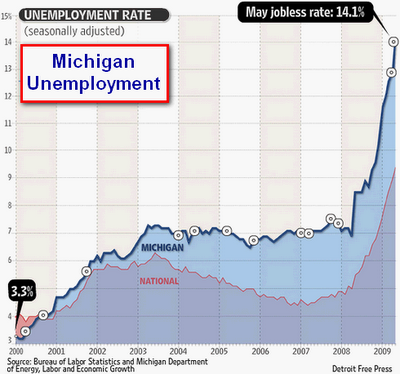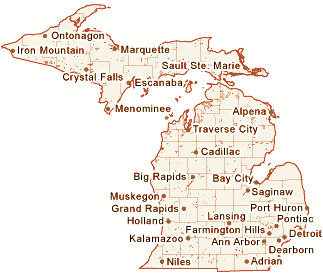Michigan Unemployment Rate
Michigan's Unemployment Rate
(Current Michigan Unemployment Rate)
August 26, 2014 Update: Federal Unemployment.
The state of Michigan recently published a mid-year report that parallels the 2014 job growth forecast that was released late last year. For the first time in many years, the overall number of jobs across the state has increased on par with the rest of the country. Despite the general state of the recession and above average unemployment rates across the nation, healthcare jobs and skilled labor positions in Michigan have experienced significant growth this year.
Perhaps the most astounding discoveries are the increase in teaching positions, daycare centers, human resource managers, and truck drivers for distribution centers. When these factors are present in the data, it point to more than simple job growth in specific fields. They all lead to a more promising future for a state that is finally beginning to produce more goods and services that can be exported for profit, thereby making room for even more new positions and positive growth for educational opportunities.
August 17, 2014 Update: The state of Michigan, long a stand in for national unemployment with its massive decrease in automotive jobs over the last decade, is once again seeing a decline in jobs. The unemployment rate for July of 2014 was measured at 7.7 percent, where it was only 7.5 in June, according to the Department of Technology Management and Budget. Both of those rates are have been seasonally adjusted. Still, overall the job market has improved since the same time last year when it stood at 9 percent, which is certainly good news for that state.
Michigan Unemployment Rate by County
|
The figure to the left portrays the unemployment rate by county, seasonally adjusted for this year. The Department of Labor publishes these statistics on a monthly basis. The Bureau of Labor only includes those who have been out of work within four(4) weeks or less in 2012. It does not represent the actual percentage of people who are jobless. These numbers are readily available to the public 24 hours per day, 7 days per week. They can be searched by city, or by county. These figures essentially determine the length of compensation pay. They also serve as a formidable source of reference to measure economic trends across the United States. |
Flint Michigan Unemployment Rate

(The chart depicted above shows the statistic history; it's increases and decreases, beginning 15 years ago, spanning until present day)

(This picture shown compares figures of the recent years of 2010 to 2011, and 2011 to 2012. As you can see in the graph, the trends improved slightly in 2011 before taking a repeated dip for thus far for 2012)

